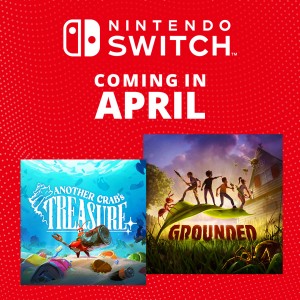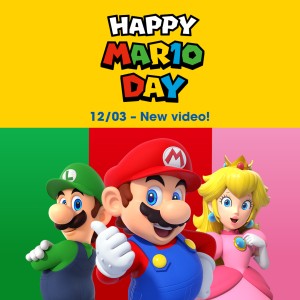Behind the scenes of Disney Epic Mickey with Warren Spector
19/11/2010
Disney Interactive Studios’ long anticipated title Disney Epic Mickey promises to bring an action-adventure platformer where the player’s choices affect the world exclusively to Wii.
Disney Epic Mickey is set in a world called Wasteland, a magical place where Disney’s outmoded characters go. Years after accidentally unleashing a terrible force on Wasteland, Mickey Mouse finds himself trapped there and embarks on a quest to escape the twisted haven for the forgotten. With the ability to paint in or erase parts of the cartoon world using paint and thinner, Mickey’s epic journey will see him rediscovering old friends, realising the importance of family and, with your help, saving the world.
The main creative mind behind Disney Epic Mickey’s development is none other than Warren Spector, a games industry veteran with 20 years of experience whose rap sheet includes credits as a novelist, producer, game designer, writer and founder of Junction Point Studios.
We sat down with Warren for a Q&A to paint in some of the details surrounding Epic Mickey’s development. Read on for Part One of our session…
Nintendo of Europe: How did you get involved with Disney Epic Mickey?
Warren Spector: I was out at Disney, pitching some other projects that I wanted to do and - I don’t know how they knew I was the biggest Disney fan in the world and a cartoon fanatic – but they asked me if I was interested in doing a Mickey game. I told them maybe, while jumping for joy inside and then they said, “We have a treatment for a game, we have a concept. You don’t have to do any of this, but we want to tell you about it.”
So I listened to it: they knew they wanted to bring Oswald the Lucky Rabbit back into the family, they knew they wanted Mickey to be the hero, they proposed using The Phantom Blot as a villain and they had the idea for Wasteland. Those four elements resonated so much with me that I just knew I had to be the one to take that concept, make it my own and make a great game out of it.
NoE: You’re a big Disney fan?
WS: I was a Disney fan from birth! My dad gave me a Pluto plush toy the day I was born and my mom put mouse ears on me for the first time when I was nine months old, I even have the photos to prove it. I’m also a ‘lifelong cartoon guy’, I tried my hand at animation and if I had been a better artist I might have been able to do something with it. I taught animation history classes at university - I just know the history of cartoons really well.
NoE: So once you’d agreed to do it, where did you start?
WS: I resolved to find the things that resonated with me (and would resonate with players) out of Disney’s history and structure them in a specific way. Wasteland itself is made up of a lot of smaller lands, it’s all structured kind of like Disney park… So I went and scoured the Disney archives for the best lands - the ones that had the most forgotten rides and rejected concepts - as well as for the characters I thought would make the best foils for Mickey, both friends and enemies.
When they opened up the archives, it was the most thrilling thing in the world! I’ve held storyboards in my hands for the Gremlins movie that never got made! I found memos from Walt Disney, that have Mickey and Oswald in them, from 1935!
NoE: Did you get access to everything Disney has with free reign to pick, or did Disney provide guidance with characters and ideas they wanted to be included in the game?
WS: Once they got done pitching that basic concept they gave me an amazing amount of creative freedom - it’s really been very gratifying and, honestly, a little surprising. I can’t imagine they just turn the keys to the Kingdom over to just anybody, so I feel honoured to have been given the opportunity to do this.
NoE: When did Wii come into the picture?
WS: There was a pretty magical day actually, where I met with Graham Hopper (the guy who runs Disney Interactive Studios) and I made clear my commitment to nothing less than ‘Game of the Year’ quality. I may not succeed, but I’m not going to start anything that I don’t think has the potential to be the best game ever.
So he said, “Warren, how do we ensure ‘Game of the Year’ quality?“ I told him there’s no way to ensure that, but enough time to do the job right is a requirement. You cannot rush great games. I also told him that it would be nice to be able to focus on a single platform.
Then the magic happened - he asked me what I thought about Wii! I was like, “Every time I start talking about the paint and thinner mechanic my hands start moving as if I have a brush in my hand, like the Wii Remote. Yeah!”
NoE: Did the focus of the game change once the decision had been made to go Wii-exclusive?
WS: In January 2008 we started from scratch because I didn’t want to just take some design we had and jam it in.
The control system completely changed obviously, the other big difference was that when we became Wii-exclusive we looked at broadening the audience, saying: “Let’s make this a real Disney game, not just a gamers’ game.”
It’s very much Disney’s way to make something for people from eight to 80, to have parents playing with kids. I was originally shooting for a game were you could literally erase everything, which was something that I didn’t think was appropriate for Wii. I decided to take it down a notch, constrain that mechanic a little bit - and it worked perfectly.
NoE: Can you give us any examples of this?
WS: I had been looking for some way for The Phantom Blot to threaten the world and threaten Mickey in a cool, compelling way; and the change of scope led to the idea of inert material.
In the game we have painted toon things that you can erase and we have very sketchy things that have already been erased, or that Mickey erases himself. We created another type of thing: inert things that have had the life drained out of them. I thought of inert material as a really monstrous concept, a real threat that we incorporated to make things a little more accessible to a broader audience. It was a change, not that we did for Wii, but which the change to Wii made even more obvious.
NoE: In Disney Epic Mickey, your actions can alter your path or change how characters perceive you. Can you give any of examples of this?
WS: There are places where you have to reach a goal and in normal games there’d be a bunch of platforms you’d jump across: your skill as a platform player would determine whether you reach the goal. In this game, there are situations like that, but if you’re observant and look carefully you might notice where parts of the world have been erased by The Phantom Blot. If you’re willing to spend the resources, you can paint them back in and make your path in the game easier.
Or it may be you need to get from one place to another and there’s an enormous castle blocking your way. Well, in most games you’d have to walk around and find a way to get to the other side, in Disney Epic Mickey you can say, “I’m just going to erase the wall and walk on through!”
The person who owns that castle is probably not going to be happy with you, even though you did it because you’re trying to save the world! It’s a heroic act, but it has a consequence for this other character: so how you interact with the world affects how characters respond to you.
NoE: Epic Mickey features areas where the game switches from 3D to a 2D cartoon. How did that come about? What purpose does the 2D serve?
WS: When I wanted to do a platform game (and no publisher was crazy enough to let me do it since I had no experience) I originally wanted to make a game where players could feel like they were in a Mickey Mouse cartoon. Movies are a 2D medium, or they were when I started thinking about this for Disney. I wanted Mickey to jump into a screen so he could re-experience the cartoons he’d already been in.
Then I thought about it some more: in most games, even a lot of the ones I’ve done, the way you get from one place to another is you walk and there’s a big load screen, or you get a car and drive around. So we figured: why not use movies as our travel system?
Now, to get from one place in Wasteland to another you jump into a movie screen, experience a little adventure inspired by an old Mickey Mouse cartoon and when you find another movie screen, you emerge elsewhere.
Come back next week for Part Two of our Q&A with Warren Spector, where we’ll discuss characters, collectibles and postmodern fairy tales.
Disney Epic Mickey will be in shops from the 26th of November, only for Wii.





